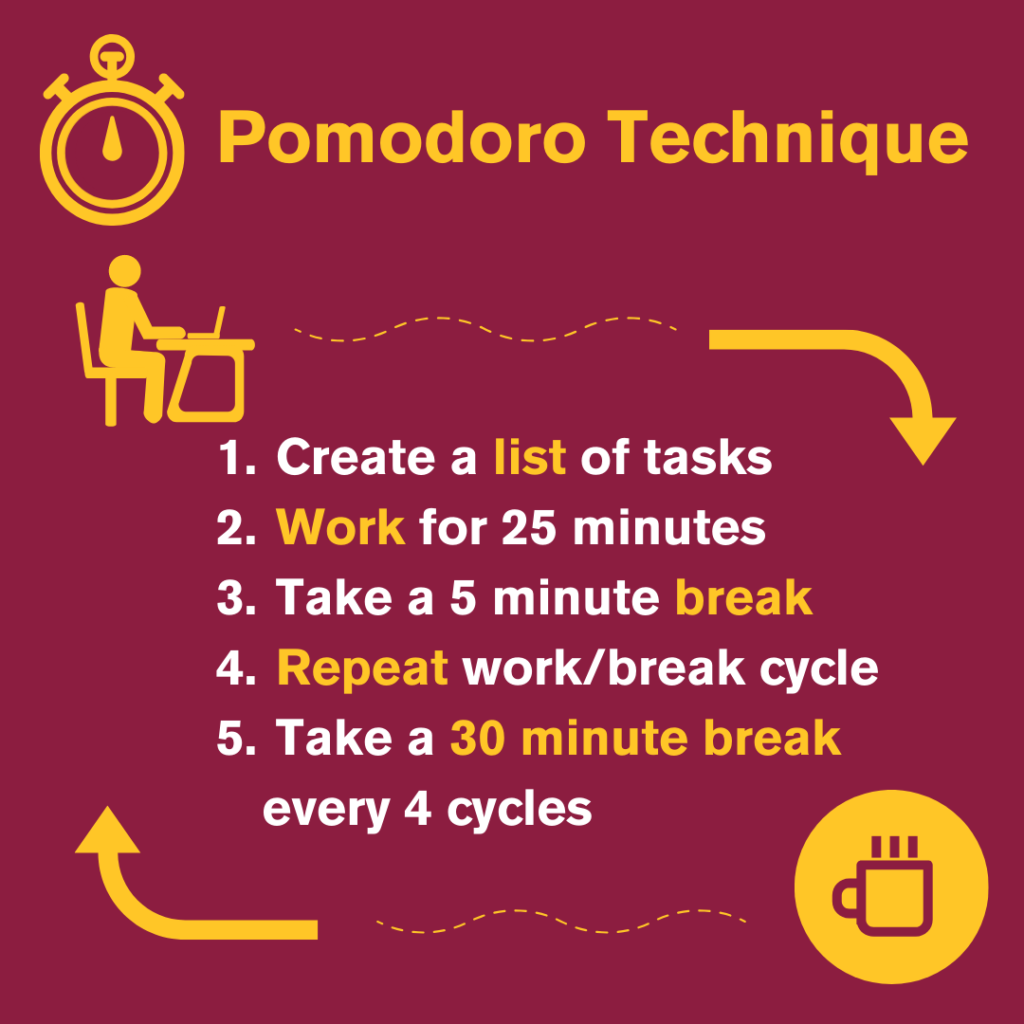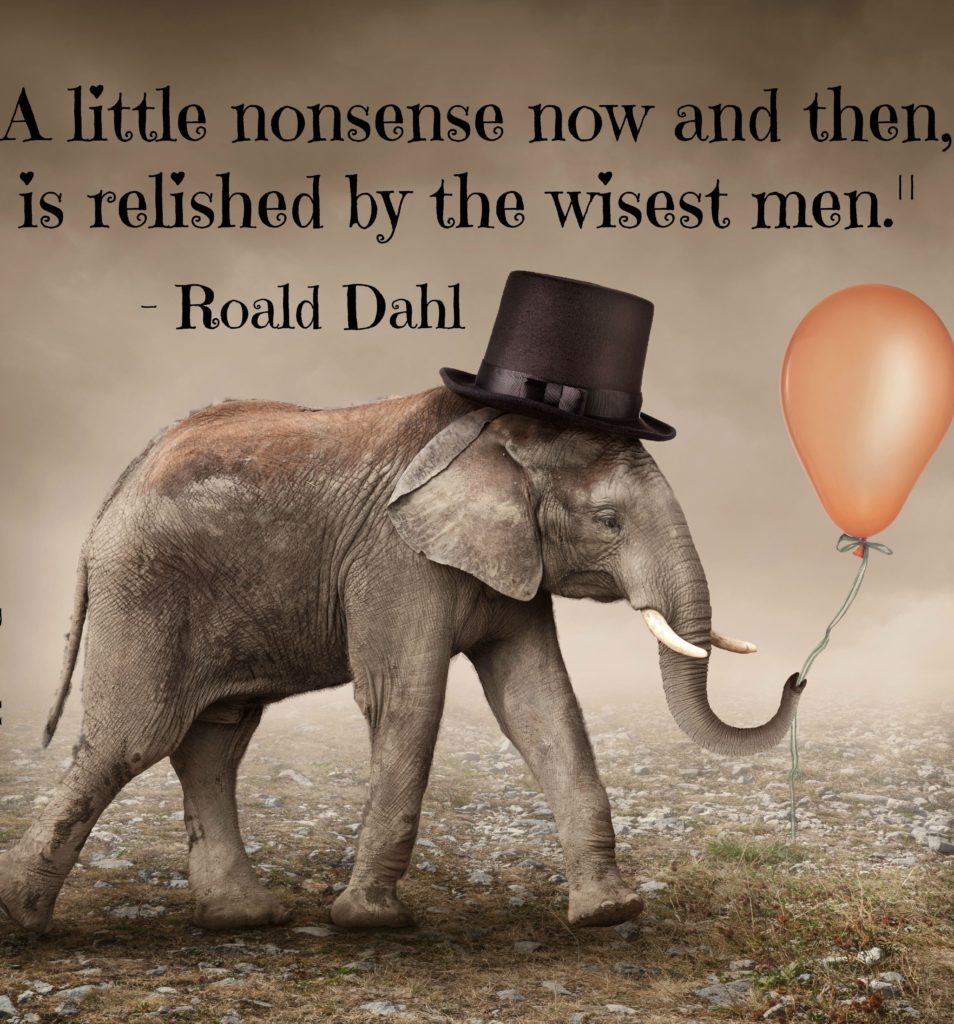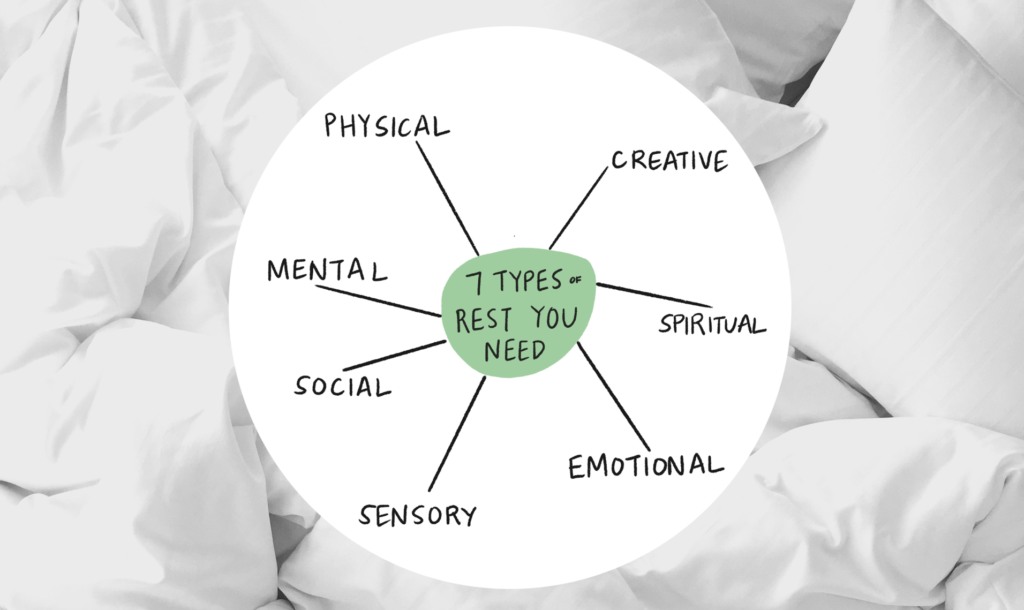
Getting proper rest is not just about getting enough sleep and vacation time. As multi-faceted beings, we have different needs that must be met to function at peak state. Knowing the seven types of breaks that boost productivity, and making time for ourselves, leads to a life of balance and success. (Estimated reading time: 6-7 minutes)
“Taking time to do nothing often brings everything into perspective.”
— Doe Zantamata
When you think of taking a break, what comes to mind? For most, it means taking time to relax, unwind, and recharge. Others see breaks as time to have fun, indulge, or go on adventures.
Feeling rested is entirely subjective. It’s unique to each person and depends on personal and physiological needs.
Cultural background can also impact what constitutes rest. In general, Southern Europeans place more importance on getting their afternoon “siesta” and carving time outside the workplace, compared to work-centric cultures like the U.S. and Singapore.
Considering there’s no one-size-fits-all approach to taking breaks, we need to ask ourselves if what we do to unwind is working for us. If you frequently find yourself in these scenarios, there’s a good chance that it isn’t:
- You return exhausted from vacation and find yourself craving another one.
- You wake up feeling tired after a long sleep.
- You feel anxious after seeing curated, and polished images of others during a “social media break”.
- You have brain fog after binge-watching Netflix shows.
It turns out that a significant number of people don’t know how to take the right kind of breaks. Consequently, they find themselves complaining about being tired and drained all the time. The can’t seem to find ways to get the productivity boost they need to excel.

Saundra Dalton-Smith, author of “Sacred Rest,” says that this happens because most people have a one-dimensional approach to rest. “They lounge around, don’t do anything, and think that’s what rest is. They try it, and then still feel rest-deprived,” Dalton-Smith says. If underlying health conditions are ruled out, feeling unrested is likely due to a “rest deficit”.
Rest deficit has become an epidemic in the modern workplace. Employees feel guilty about slowing down, worried that they might lose focus if they take a respite during the day.
In the new work-from-home-world, taking breaks has become even more essential, as the line between personal and work life has blurred. Taking breaks is the best way to create boundaries.
It may seem counterintuitive, but research has found that it’s not the employees who shut themselves off from the world and put their heads down to work non-stop who get the most high-quality work done—it’s the ones who take frequent breaks and space things out who are most productive.
Employees who work the smartest follow a rhythm of 52 minutes of work followed by a 17-minute break, which the study found to be the ideal structure to boost productivity. Whether they are micro-breaks of a few minutes of deep breathing or enjoying a walk during lunchtime, it increased their overall performance.

Some of the most successful people (CEOs, leaders, athletes, etc.), avoid the temptation to plug away without getting enough rest, no matter how fired up they are about their projects.
John D. Rockefeller, who is said to be one of the wealthiest people of all time, was careful about conserving his energy. His schedule followed a leisurely pace compared to other executives. He took naps after lunch and was frequently found dozing in a lounge chair after dinner.
Media mogul, Arianna Huffington, became an advocate for work-life balance after working herself to the point of exhaustion and passing out at her desk. After coming to realize the importance of rest, she began to take better care of herself. Huffington started seeing a difference in her work habits and made better business decisions that led to growth.
Our output improves when we take breaks because our brains are simply not wired to work non-stop. Our minds have two modes: “focused mode,” which we use when we’re tackling something new, and “diffuse mode,” representing a relaxed and less active state.
Focus mode plays a significant role in a productivity boost, but diffuse mode is just as important. Studies show that when we’re in diffuse mode, our brains have a chance to make connections and come up with valuable insights that often lead to solutions. That’s when we experience those “eureka” moments (like when we’re in the shower or while driving).

For breaks to hit your sweet spot and satiate you, they must follow these three rules:
- You must feel energized during and after the break.
- It must have a clearly laid out endpoint to prevent procrastination.
- It should put you in a positive, sharper, and more focused state of mind.
Additionally, getting proper rest requires that you find out what exact needs you need to fulfill. When we feel tired, our first instinct is to get more sleep, but that only meets one kind of rest that humans need to function at peak state.
It turns out that there’s a variety of rest that nourishes different parts of us and give us a productivity boost. If one of them is unmet, we feel out of balance. Knowing what’s missing in your life makes it easier to identify which of these seven types of rest you need in the moment:
1. Creative: This rest inspires your creativity and offers opportunities to appreciate beauty. This type is especially important for those who have jobs with a large creative and artistic component that requires originality, problem-solving, and innovation.
How to get this type of rest: Talking a walk in nature, visiting an art gallery or theater, reading a riveting book, engaging in arts and crafts, and traveling.
2. Physical: We need the restorative effects of physical rest to relieve stress, muscle aches, and improve sleep quality. Physical rest is essential to maintaining energy levels and mobility.
How to get this type of rest: Physical rest can be either passive or active. Passive rest includes sleeping at night and napping, while active rest means activities like stretching, yoga, massages, or tai chi that improve flexibility and blood circulation.
3. Mental: If you’re experiencing brain fog, the mid-day slump, or you’ve been feeling crabby, you need mental rest. It silences your thoughts so that you recenter and focus on what’s important.
How to get this type of rest: A meditation or mindfulness session, stepping away from computer and phone screens, taking deep breaths, and journaling about things that worry you.

4. Emotional: We experience emotional exhaustion after going through tough breakups and other periods of grief and loss. We can even experience this exhaustion after watching tragic movies! In cases like these, we need emotional rest to offload our feelings and express our genuine selves and how we truly feel.
How to get this type of rest: Speaking to a therapist or someone with whom you can be yourself, setting healthy boundaries and avoiding energy vampires, or spending time alone, away from triggers.
5. Sensory: Resting to reduce sensory stimulation from background noise, smells, bright lights, and digital devices. Sensory overload can leave us feeling anxious and in a state of frenzy.
How to get this type of rest: Unplug from digital devices (this includes watching TV, looking at computer and phone screens, scrolling through social media accounts, and video calls). Turn the lights off and find time to be alone in silence in a quiet room, in a park, or on a beach.
6. Social: Social rest offers the chance to be with supportive people who enhance your life with their positive energy while stepping away from those who drain it. For introverts, it means taking breaks from socializing when it becomes exhausting.
How to get this type of rest: Spend time with your tribe (a supportive group of people who share your ambitious streak and believe in your abilities). Maintain close relationships with those with whom you can be real and vulnerable, and avoid anyone who is toxic and competitive.
7. Spiritual: Restoring a sense of faith and trust by connecting with a higher power and something bigger. Spiritual rests anchor you, and infuse you with a sense of purpose and belonging.
How to get this type of rest: Engaging in religious and spiritual forms of prayer, rituals, community gatherings, volunteering, practicing divination activities such as astrology, tarot, and oracle card readings, and reading or listening to spiritual books and conversations.
Still not sure about what kind of rest you need? Take the Rest Quiz to find out.
Taking time to restore and replenish our inner reserves when we need it, is the ultimate display of self-respect. By tuning into our needs, and taking action to meet them, we are letting our subconscious mind and other people know that we value ourselves and that we are worthy of love, belonging, and dignity.
All my best on your journey,
Seline

Question for you: What type of break will give you a productivity boost? How do you plan to make time for taking the break you need?
Did you like this post? Sign up below, and I’ll send you more awesome posts like this every week.

Nice topic about wellness.